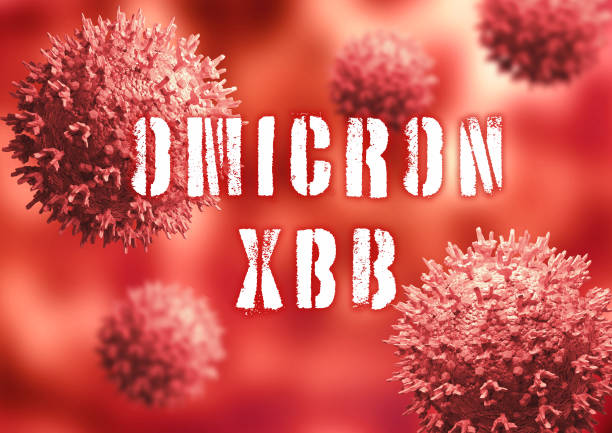
A new coronavirus variant, which has been named XBB, has now become the dominant form of COVID-19 in the northeastern part of the country and is expected to become the dominant variant worldwide.
The XBB variant, which accounted for only 11% of COVID cases in the region just two weeks ago, now makes up over half of all cases (52.6%). This is higher than the 18% of cases XBB accounts for across the entire U.S.
"The sudden increase in XBB is pretty striking," Dr. Shira Doron of Tufts Medical Center says. "I wasn't expecting it because it had been smoldering on the chart for a while."
Here’s everything you need to know about the variant.
1. It can evade immunity
Is XBB more transmissible? According to experts, the rapid spread of the XBB variant suggests it’s more adept than its predecessors at evading the immunity that comes from vaccines and infections.
“The most likely explanation is that it’s more transmissible,” says Dr. Jeremy Luban, professor of molecular medicine, biochemistry, and molecular biotechnology at UMass Chan Medical School, in a recent interview.
"I think it's like we've been seeing essentially since last December or January, that subvariants of Omicron continue to emerge," adds Dr. Daniel Kuritzkes of Brigham and Women's Hospital. "Each one that replaces the previous one is doing so either because it is more transmissible or because it is able to evade the immune response generated by the previous variant, which is more or less what viruses tend to do overall."
RELATED: FDA Has Now Approved A Breathalyzer Test For COVID-19
2. The immunocompromised face a greater risk
Similar to the previous variants, those who are immunocompromised face the greater risk. Unforuntanetly, the monoclonal antibodies used to treat those who are immunocompromised do not work against the latest variants, including XBB. Due to this, the most vunerable are left without an important tool, according to the Boston Globe.
3. Little is known about the side effects
The good news is that XBB does not seem to cause more severe illness or death, however, little is known about the effects of its subvariants, XBB.1 and XBB.1.5, which have turned up in the Northeast, according to Rajendram Rajnarayanan, assistant dean of research at the New York Institute of Technology, Jonesboro, Ark., campus.
RELATED: Wastewater Samples Detect Uptick in New COVID Subvariant
4. The symptoms are similar to other variants
The symptoms of the latest Omicron subvariants are mostly similar to those of the earlier version of Omicron, according to NBC News.
Typical symptoms of the Omicron subvariants include:
- Sore throat
- Hoarse voice
- Cough
- Fatigue
- Nasal congestion
- Runny nose
- Headache
- Muscle aches
RELATED: Is it Coronavirus, The Flu, A Cold or Allergies? Here's How to Tell
Unlike earlier variants such as Delta, which strongly affected the lungs, Omicron and its subvariants tend to cause more upper respiratory symptoms, according to doctors. Those symptoms can include congestion, sore throat and changes in taste and smell.
5. Certain factors may be contributing to the spike
Dr. Eric Topol, executive vice president of Scripps Research in La Jolla, Calif., noted that the arrival of XBB.1.5 in New York coincided with a marked rise in hospitalizations in that state.
“Of course, other factors are likely contributing such as waning of immunity, indoor/holiday gatherings, cold weather, lack of mitigation. But it is noteworthy that New York’s [COVID-19] hospital admission rate is the highest since late January,” he wrote in an online column. “So we don’t know for sure how much of this is being driven by XBB.1.5, but it doesn’t look favorable.”
RELATED: Confused About COVID-19 Boosters? Experts Answer 6 Common Questions
6. You can protect yourself
The best way to protect yourself is no different than with other variants. Experts encourage booster shots. The bivalent booster vaccine that has been used to protect against the Omicron variant and the original form of the virus has proven to be effective against XBB, according to a recent small study.






